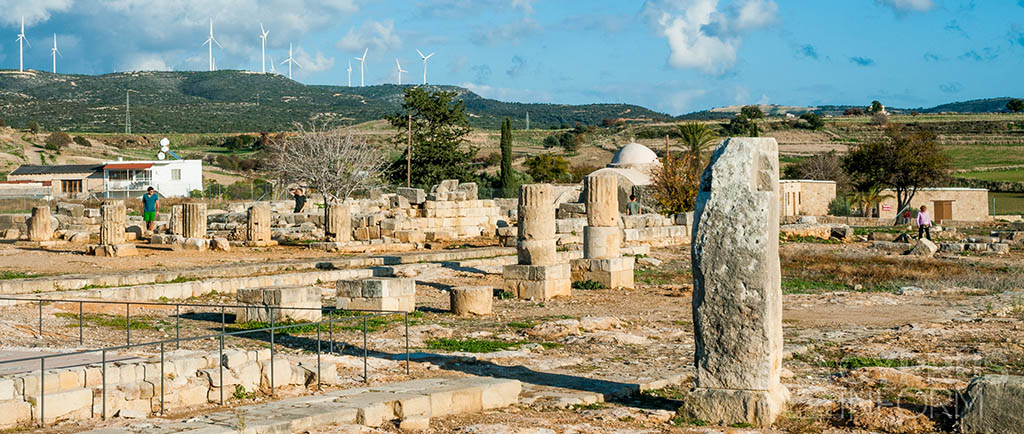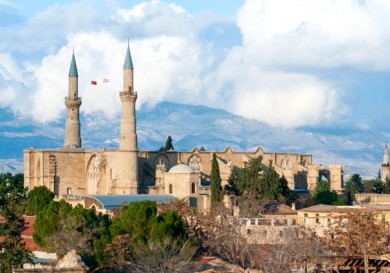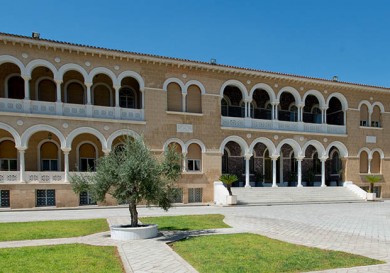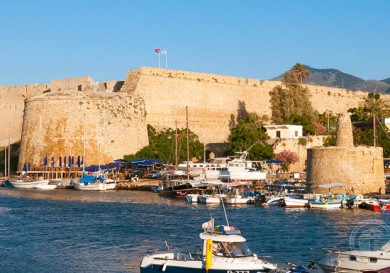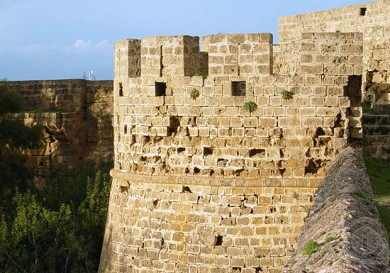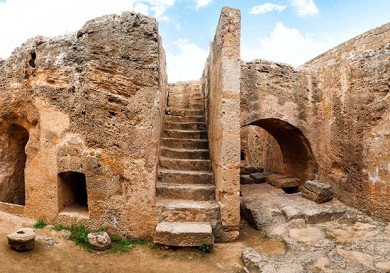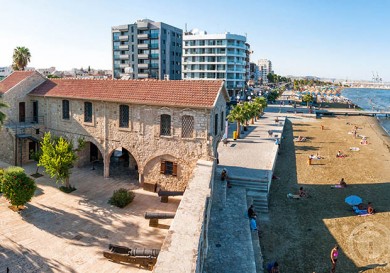The history of Aphrodite’s sanctuary in Palea Paphos
The worship of Aphrodite began in Cyprus in the 12th century B.C., at the same time the temple of Aphrodite was constructed on a hilltop in the village of Kouklia, about 2 km from the sea. The town of Palea Paphos quickly grew up around the church. There are two legends in Palea Paphos.
The Legend of King Kinyras
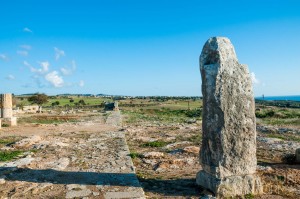 According to one legend, the founder of the settlement and the first priest of Aphrodite’s sanctuary was the legendary king Kinyras.
According to one legend, the founder of the settlement and the first priest of Aphrodite’s sanctuary was the legendary king Kinyras.
His daughter, the beautiful Myrrha, was turned into a fragrant tree (myrrh tree) by her jealous mother, the goddess Aphrodite.
Adonis was born from the bark of this tree, who in turn then became the lover of Aphrodite.
The legend of the Greek king, Agapenor
The second legend is about King Tegea of Arcadia (Greece), Agapenor.
Storms forced the Greek ships returning from the Trojan War to land at Cyprus, and the leader of the Arcadian soldiers, King Agapenor, founded the city and the sanctuary at Palea Paphos.
The heyday of the temple of Aphrodite in Cyprus
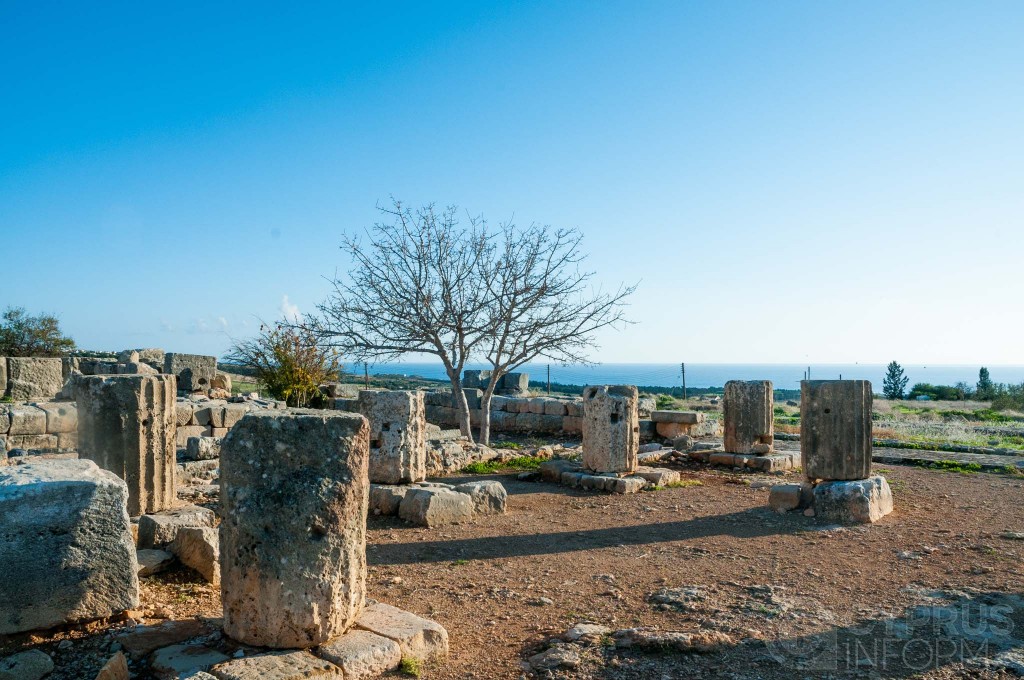 Palea Paphos remained the largest settlement and religious centre in the western part of Cyprus since the early Geometric period (900-700 B.C.), until the end of the classical period (480-323 B.C.) The last ruler of Palea Paphos was king Nikokles, who moved the capital of his state to Nea Paphos (lower Paphos district nowadays).
Palea Paphos remained the largest settlement and religious centre in the western part of Cyprus since the early Geometric period (900-700 B.C.), until the end of the classical period (480-323 B.C.) The last ruler of Palea Paphos was king Nikokles, who moved the capital of his state to Nea Paphos (lower Paphos district nowadays).
The sanctuary of Aphrodite continued to flourish in the Roman era. Several Roman emperors honoured the temple, including the Roman Emperor Titus in 69. on his way to Egypt.
The church was completely destroyed after the earthquake in 76-77 A.D., but was soon rebuilt by the Romans. The new church was bigger and grander than the previous one.
The first places of worship in the temple were located in a fenced area of approximately 50 x 20 m. Roman buildings occupied a large area. The temple was a large open courtyard, at the Sacred centre of which was a black conical stone over a metre in height – Cadarache (black stone).
The fall of the Sanctuary of Aphrodite
Religious and cultural events in the sanctuary of Aphrodite ceased in the 4th century A.D. with the growth and spread of Christianity throughout the island, after the publication of the Edict of Milan by the Roman emperor, which abolished pagan sacrifices and rituals.
The temple fell into disrepair, but even before the adoption of this law, Theodosius, a rich Roman, built a private villa next to the temple (small pieces of the mosaic floor of the Roman villa can be seen to this day), causing some damage to the building.
During the Byzantine period the locals used the ruins as a source of building materials. Today, almost all the old buildings include one or two stones from one of the most important shrines of the ancient world.
And finally, in the Middle Ages, a factory producing sugar was built on top of the stone foundations which destroyed everything over half a meter from the ground.
How is the space used nowadays
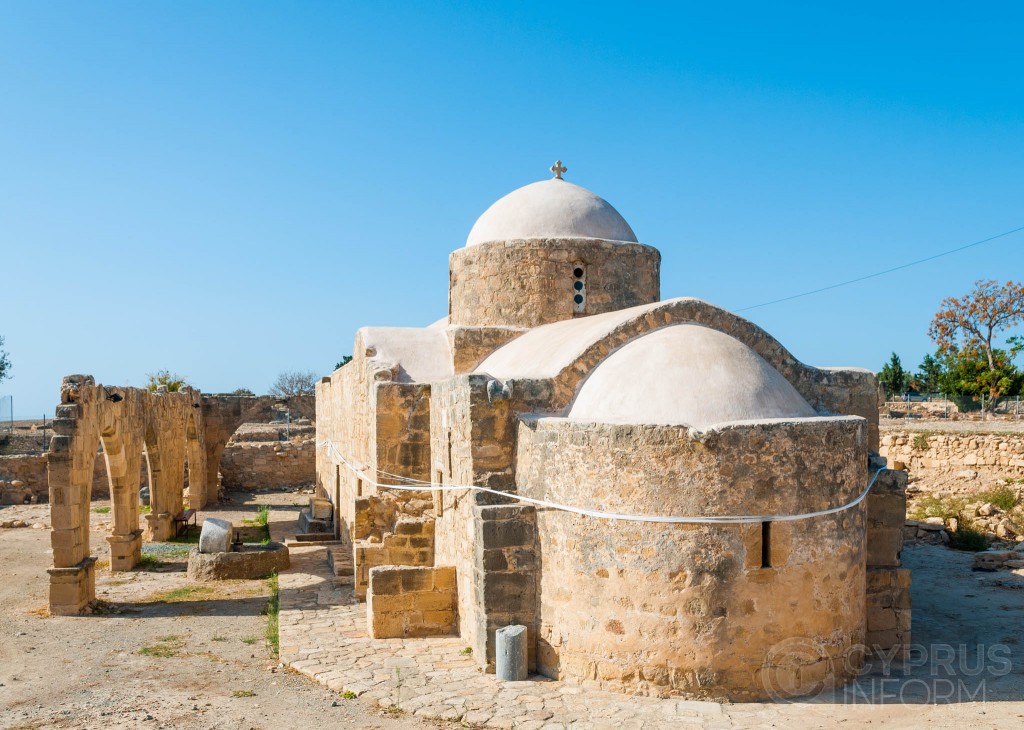 The sanctuary of Aphrodite was first excavated in 1887 by experts of the Cyprus Research Foundation. Some of the artifacts discovered were transferred to the British Museum.
The sanctuary of Aphrodite was first excavated in 1887 by experts of the Cyprus Research Foundation. Some of the artifacts discovered were transferred to the British Museum.
Excavations were continued by the British expedition in 1950-1955. In 1996, on the site of the sanctuary of Aphrodite, studies were continued by the Swiss-German expedition.
Currently only the foundations and fragments of architecture and stones scattered around the area of the temple are left.
Near the sanctuary you can see the church of Panagia Katholiki, built in the 12th century. Inside the church ancient frescoes from the 14th – 16th centuries can be found.
What to see in the temple of Aphrodite
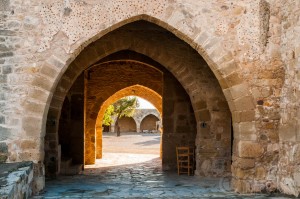 In one of the corners you can see a copy of the ‘Leda and the Swan’ mosaic on the floor, from where the original was stolen in the2nd or 3rd century A.D., and later restored in London.
In one of the corners you can see a copy of the ‘Leda and the Swan’ mosaic on the floor, from where the original was stolen in the2nd or 3rd century A.D., and later restored in London.
Not far from the sanctuary, in the former estate of Lusignan La Cavocle, an archaeological museum of Palea Paphos has been opened.
In the gallery of the museum in chronological order, finds from Palea Paphos are on display, including:
- A fragment of the black stone of the temple of Aphrodite;
- Sarcophagus (5th century B.C.), decorated with carvings and colourful paintings;
- A fragment of the ‘Leda and the Swan’ floor mosaic;
- Old tub for bathing;
- Many small items dating back to 11th century B.C.
Excavations are still carried out at the sanctuary of Aphrodite, so the collection of the museum is regularly replenished.
Opening hours
- Summer: from 16 April to 15 September, every day from 08:30 to 19:30;
- Winter: from 16 September to 15 April, daily from 08:30 to 17: 00;
- Closed for Christmas, Easter (Sunday Greek Orthodox Easter) and the New Year.
Tickets
- 4,50 euros;
- For groups of 10 people — 20% discount.
Getting there
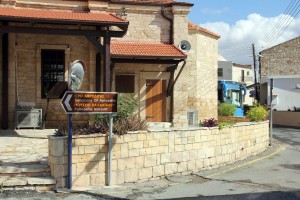 To reach the sanctuary of Aphrodite in Palea Paphos you can use only private transport. Cyprus Inform map. The holy places. Kouklia, point ‘C’.
To reach the sanctuary of Aphrodite in Palea Paphos you can use only private transport. Cyprus Inform map. The holy places. Kouklia, point ‘C’.
It’s fairly straightforward to find the Temple of Aphrodite: on the A6 highway connecting Paphos and Limassol, you must follow the signs to Kouklia and then the signs towards Kouklia and the Sanctuary of Aphrodite.
If you are coming from the ‘birthplace’ of Aphrodite, you should drive along the sea front on highway B6 in the direction of Paphos, turn right at the sign to Kouklia, and after about a kilometre you will find yourself in a parking lot near the entrance to the Sanctuary of Aphrodite.




